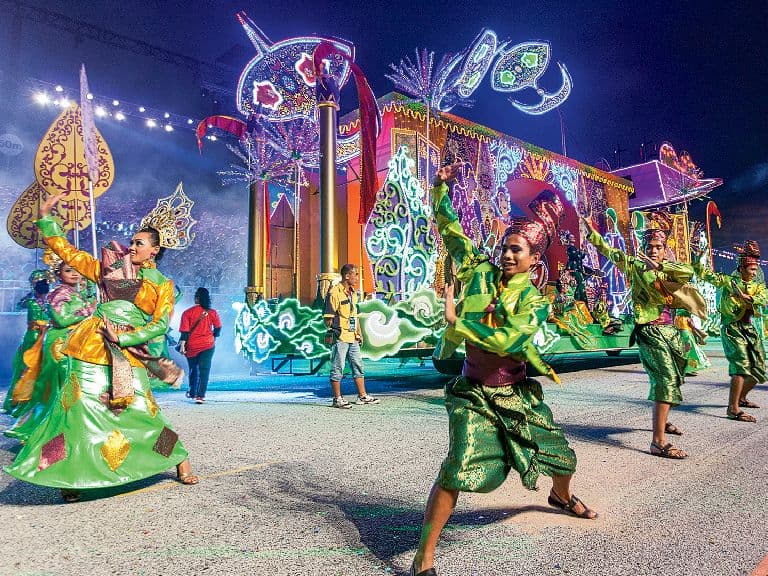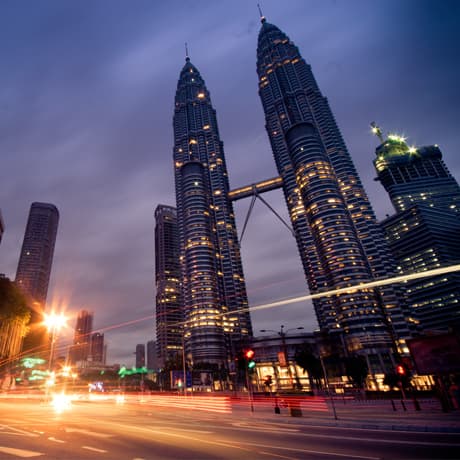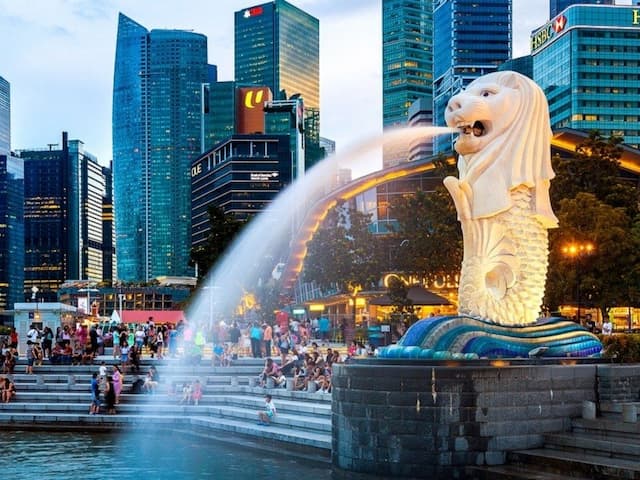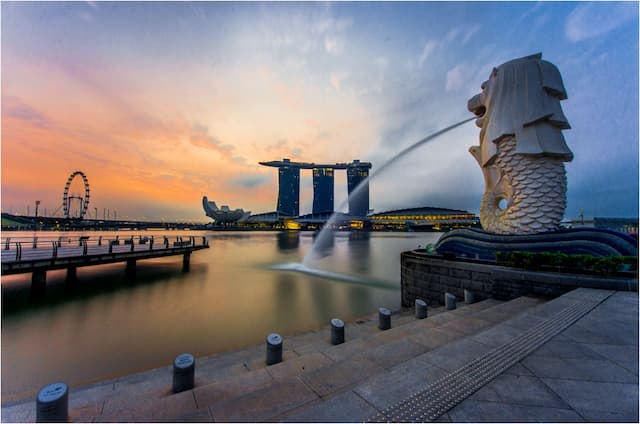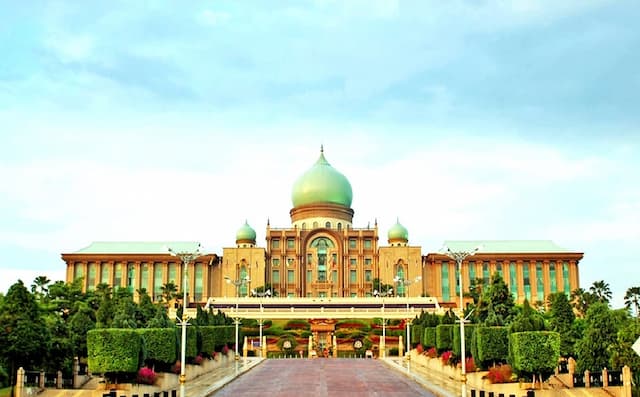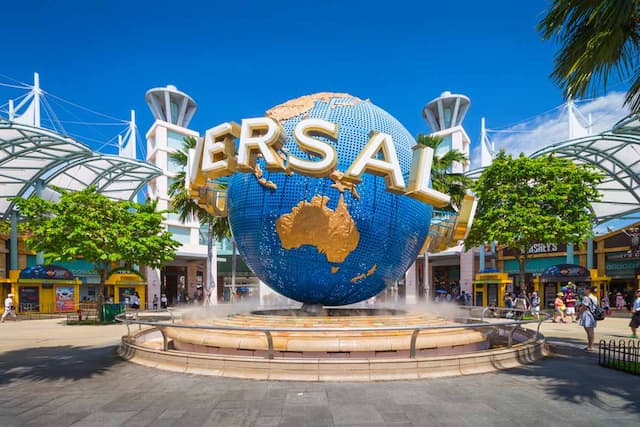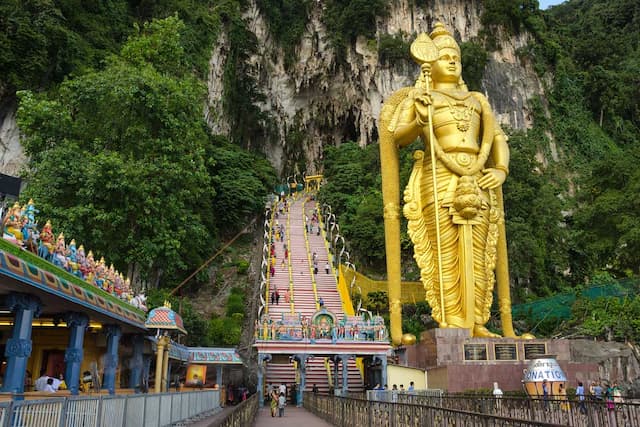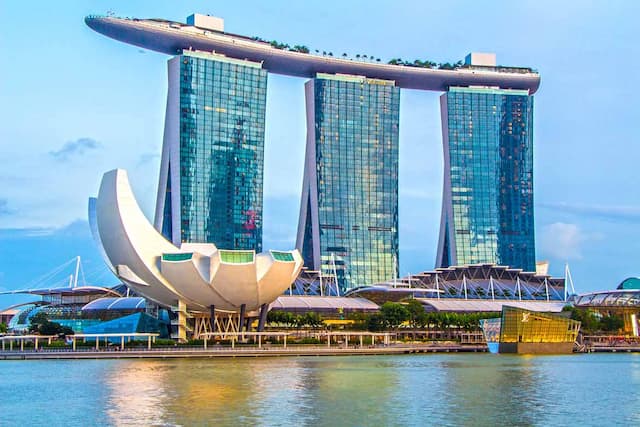History & Culture in Singapore
Singapore has been one of Asia's head destinations even before the pre-pioneer period. Its location upon the Strait of Malacca makes it an essential port, which prompted its colonization by the British in the nineteenth century. From that point forward, Singapore has encountered real development and advanced into one of the world's leading financial centers.
In the year 1819, Sir Thomas Stamford Raffles arrived and settled in the southern part of Singapore for the British East Indian Company. By 1824, the whole island fell under British standard, and by 1826, Singapore turned out to be a piece of the British India Strait Settlements. In excess of 80,000 individuals lived inside the locale by 1870, as the elastic manor pulled in a large number of Chinese, Indian and Malay laborers. A statue of Sir Stamford Raffles is situated in downtown Riverside.
Despite the fact that it took a very long while to change Singapore into an industrialized nation and expat hotspot that it is today, the foreign effect on culture in Singapore remained. Today it is assumed that just over half of the workforce in Singapore is foreign. Singapore’s culture is largely described by peace, social and religious harmony. It is known as the fine city which not only refers to its cleanliness of the quality of life people live here but it also states safety and order of the state. If you don’t wish to pay a heavy fine or even visit jail, you should avoid the below
• Chewing gum
Top tour packages
Uniquely Singapore with Malaysia
Kuala Lumpur (3N) Singapore (3N),
Main + Internal Flight Included
₹1,39,050
per person
- Apr, Jan, Jun, May
South East Discovery 8 Singapore Malaysia With Cruise
Kuala Lumpur (3N) Cruise (2N), +1 more
Main Flight Included
₹1,65,910
per person
- Apr, Dec, Jan, May
South East Discovery 4 Singapore Malaysia With Cruise
Singapore (3N) Cruise (2N), +1 more
Main Flight Included
₹1,75,410
per person
- Dec
Dreams Singapore Malaysia and Cruise
Kuala Lumpur (1N) Genting Highlands (1N), +3 more
Main + Internal Flight Included
₹1,76,690
per person
- Apr, Feb, Jan, Jun, Mar, May
Dreams 6 Singapore Malaysia and Cruise
Singapore (3N) Cruise (3N), +1 more
Main Flight Included
₹1,78,500
per person
- Feb
Dreams 10 Singapore Malaysia With Cruise
Singapore (3N) Cruise (2N), +3 more
Main Flight Included
₹1,87,140
per person
- Dec
Simply Singapore With Beautiful Bali
Singapore (3N) Bali Island (2N), +1 more
Flight Not Included
₹48,280
per person
- Valid upto 30 Sep 2026
Simply Singapore with Royal Caribbean Cruise
Singapore (1N) Cruise (3N), +1 more
Flight Not Included
₹1,21,910
per person
- Valid upto 30 Sep 2026
Honeymoon Special Singapore And Langkawi
Singapore (3N) Langkawi (3N),
Flight Not Included
₹48,820
per person
- Valid upto 30 Sep 2026
Simply Singapore With Lush Green Langkawi
Singapore (3N) Langkawi (3N),
Flight Not Included
₹48,820
per person
- Valid upto 30 Sep 2026
Simply Singapore With Magical Malaysia
Singapore (3N) Genting Highlands (2N), +1 more
Flight Not Included
₹54,550
per person
- Valid upto 30 Sep 2026
Extravaganza Singapore with Sentosa
Singapore (3N) Singapore (2N),
Flight Not Included
₹59,280
per person
- Valid upto 30 Sep 2026
Singapore Escape With Genting Dream Cruise
Singapore (4N) Cruise (2N),
Flight Not Included
₹71,280
per person
- Valid upto 30 Sep 2026
Dazzling Singapore
Singapore (3N) Singapore (1N),
Flight Not Included
₹80,280
per person
- Valid upto 30 Sep 2026
Wonderful Singapore With Beautiful Bintan
Singapore (3N) Bintan Island (2N), +1 more
Flight Not Included
₹83,640
per person
- Valid upto 30 Sep 2026
Truly Singapore And Malaysia With Genting Dream Cruise
Singapore (4N) Cruise (2N), +2 more
Flight Not Included
₹96,460
per person
- Valid upto 30 Sep 2026
Singapore Sailing Getaway with Disney Adventure Cruise
Singapore (3N) Cruise (3N),
Flight Not Included
₹1,17,550
per person
- Valid upto 30 Sep 2026
Delight 1 Singapore Malaysia With Sentosa Stay
Singapore (2N) Cruise (2N), +2 more
Main Flight Included
₹1,77,140
per person
- Apr, Jan, Jun, Mar, May
South East Experience 4 Singapore Malaysia With Cruise
Singapore (2N) Cruise (2N), +4 more
Main Flight Included
₹1,84,280
per person
- Apr, Jun, May
Dhamaka Singapore Malaysia & Thailand
Singapore (3N) Kuala Lumpur (3N), +2 more
Main + Internal Flight Included
₹2,17,000
per person
- Feb, Jan
Happy Travellers
Beautiful Memories with Flamingo Transworld
Dr. Kruti Patel
 Aug
AugA Dream Trip to France and Switzerland with Flamingo
Mr. Dharmesh Shah
 Aug
AugIncredible Europe Tour with Flamingo Transworld
Ms. Jyoti & Mr. Tushar
 Jul
JulWonderful Japan Trip Experience with Flamingo
Surabhi Udeshi
 May
MayUnforgettable Experience With Flamingo Transworld
Mr. Ambrish Shah
 Mar
MarAn Unforgettable Journey with Unnati and Flamingo !
Mr. Navneet Bisani
 Dec
DecWe are Thankful to Flamingo Tours And Travels
Mr. Vijay Shah
 Oct
OctExcellent Experience Southeast Trip With Flamingo Travels
Mr. Manoj Betai
 Jun
JunWonderful Trip with Flamingo Travels
Ms. Chetna Ajmera
 Jul
JulSuper Experience with Flamingo Travels
Shailesh Shah
 Jun
JunTrending travel articles

Affordable Bali Trip Under ₹30000 – Flamingo Transworld Budget Itinerary for First-Time Travelers
Summary: Looking for a budget-friendly Bali trip in 2026? This blog shows how you can enjoy a relaxing 5-day Bali Trip under ?30000/- by choosing smart stays, simple food and the right places. Perfect for first-time Indian travellers looking for a budget-friendly Bali holiday. We all have seen tons of pics of temples, Bali Swing, […]

Japan Tour Packages from India Under ₹3 Lakh – Explore Japan on a Budget
Summary: Your dream of exploring Japan is possible, even with a strict budget! This blog shares how Japan tour packages from India under ?3 lakh are possible. It covers real costs, budget tips, the best time to visit, and much more. It helps you understand how to save money and still enjoy a great Japan […]
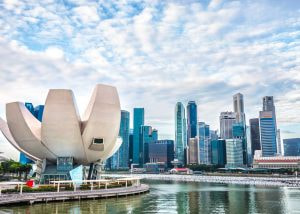
Singapore Tour Packages from India Under ₹1 Lakh – Budget-Friendly Trips 2025-26
Summary: A trip to Singapore can fit your budget with the right plan. This blog explains how Singapore tour packages from India under ?1 lakh work, what costs to expect, and how to save money. It helps you understand the best places to visit in Singapore in 2026 so you can enjoy this island country […]
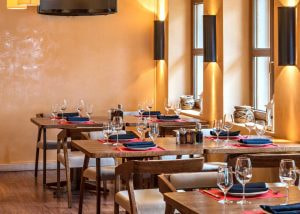
Top Indian Restaurants in Hanoi to Try in 2026!
Summary: Indian restaurants in Hanoi are more than just places to eat. They serve Indian food with a Vietnamese welcome. Whether you are a vegetarian, prefer halal food, or just miss home-style dal, these restaurants have it all. Every meal is served with care and a friendly smile, making you feel right at home in […]

Macau – A city that refuses to sleep , and wont let you either !
Summary: Macau Travel – Macau is a city that never slows down—filled with luxury hotels, thrilling attractions, endless nightlife, and unforgettable energy. From staying at The Venetian to breathtaking Macau Tower views and vibrant casinos, Muskan Golecha’s experience captures the true spirit of a city that you don’t just visit, you live! Macau is one […]

10 Days Itinerary for Switzerland – Perfect Trip Plan for First-Time Visitors!
Summary: If you want a calm, scenic, and well-paced trip, this 10 days itinerary for Switzerland is made for you. It suits families, honeymooners, seniors, and solo travellers. This plan combines top attractions with relaxed, easy travel days. It also keeps Indian comfort in mind. Read on to get the full day-by-day plan, smart tips, […]

Switzerland in Winter 2026: A Fairytale Experience of Snow, Alps & Christmas Markets!
Summary: Switzerland in winter 2026 is pure magic, snow-dusted Alps, glittering Christmas markets, and cozy wooden chalets bring fairytales to life. Whether you are sipping hot chocolate by the beautiful Swiss lakes or exploring the festive streets of cities, it feels like a movie. Perfect for Indian travellers, families, and honeymooners. This blog helps you […]

Christmas in Dubai 2025: Lights, Luxury & Festive Shopping!
Summary: Experience the magic of Christmas in Dubai 2025, where the city sparkles with lights, music, and festive cheer. From grand events to lively markets and fireworks, every corner feels joyful. Enjoy delicious food, family fun, and exciting shopping deals during the Dubai festive season. Plan your trip easily with Dubai Tour Packages and make […]

Bhutan In December 2025- Weather, Insider Tips, Best Time to Visit, and Things to Do!
Summary: Experience the magic of a trip to Bhutan in December 2025, with clear skies, vibrant festivals, fewer crowds, and stunning mountain views. This blog guides you through weather updates, travel tips, places to visit, and must-try experiences for your perfect Bhutan holiday. Plan your relaxing, crowd-free visit to Bhutan and experience the authentic charm […]
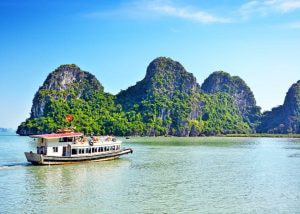
How to Plan A Budget Trip To Vietnam Under ₹60,000!
Summary: Trip To Vietnam Under ?60000 – Dreaming of travelling to Vietnam without stretching your wallet? This blog shares how to plan your trip to Vietnam under ?60,000. It shares everything, including flights, hotels, meals, and activities. Discover must-visit cities, real cost breakdown, and much more to make your Vietnam tour package memorable yet budget-friendly. […]
